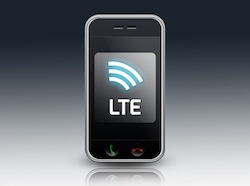The global LTE market will almost double in 2013 thanks to increased LTE network deployments in Brazil, Russia, India and China, according to latest forecasts.
Infonetics Research’s year-end “2G, 3G, 4G Mobile Infrastructure and Subscribers” report reveals that the global mobile infrastructure market, which includes 2G/3G, LTE and WiMax, rose by six percent to €8.3 billion in Q4 of 2012, driven by North America, China and sustained modernisation projects in Europe.
“The US, Japan, and South Korea have been fuelling the engine with LTE, but weak activity in BRIC countries dragged the overall mobile infrastructure market in 2012,” said Stéphane Téral, principal analyst for mobile infrastructure and carrier economics at Infonetics Research.
“The good news, though, is that this year the BRIC countries are coming back with some serious LTE spending.
“We’re forecasting the LTE market to almost double in 2013, easily passing the $10-billion mark for the first time. Operators are in the midst of a second wave of LTE deployments, and LTE-Advanced is gearing for true 4G prime time, with NTT DOCOMO, SK telecom, and likely Russia’s Yota all planning launches this year,” he added.
In another report released today about mobile spectrum, Infonetics has also discovered that average mobile broadband speeds remain quite low, below 4Mbps on average in the 16 largest economies in the world.
Russia leads the way with the highest average speed for 4.1 Mbps and a peak speed of 21 Mbps, due to the fact that it has “one of the world’s best mobile networks”, low internet usage and few 3G subscribers, according to Infonetics.
While the US, South Korea and Japan are on track to need 1,000 MHz of spectrum by 2017 to satisfy their mobile broadband needs, Téral feels that operators should use alternative techniques to optimise their current cellular resourses, instead of just adding more spectrum, such as Wi-Fi offload.
“HSPA+ and LTE are two of the primary reasons operators have been able to squeeze more and more bits out of limited spectrum,” he said.
“HSPA/HSPA+ and LTE improve spectral efficiency so significantly that the need for spectrum has been greatly reduced, often by at least half. LTE technology is not only resistant to interference between cells but also spreads transmission efficiently over available spectrum.”
Photograph © Ben Chams – Fotolia.com



